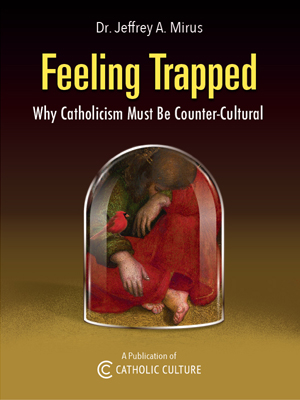A 'liturgist' need not be a liberal
By Phil Lawler ( bio - articles - email ) | May 21, 2010 | In Reviews
No doubt you've heard the joke:
Q: What's the difference between a liturgist and a terrorist?
A: You can negotiate with a terrorist.
Mention that a priest is a "liturgist," and a typical conservative Catholic will recoil. Years of liturgical experimentation have left the faithful fearful of clerics who profess a special expertise in the field.
But it was not always thus. There is no inherent reason why the faithful should necessarily be leery of those who take a special interest in liturgical affairs. The reform of the liturgy is a top priority for Pope Benedict XVI, and if his efforts in that field are successful, maybe in future years the liturgists will regain their respectability with the Catholic laity.
The 40 years of liturgical turmoil following Vatican II have deformed our perception of what it means to be a liturgist. We work today with many assumptions that would not have seemed logical at all in the 1950s.
Roman Catholic Books has done a service by publishing an English translation of a book that helps to correct the historical record and restore a proper understanding of what an authentic Catholic liturgist should be. The Development of the Liturgical Reform is a historical study, based heavily on the diary of a consummate Vatican insider, the late Cardinal Giuseppe Ferdinando Antonelli.
It's probably far to say that Cardinal Antonelli was involved with liturgical affairs longer, at a higher level, during a more important historical period, than any other man in the long history of the Catholic Church. From 1930, when he was appointed a consultor to the Sacred Congregation for Rites, virtually until his death in 1993, he was intimately involved with the discussions, debates, and skirmishes over liturgical changes. It is fascinating to observe the gradual shifts in his thinking-- and, more notably, the changes in his attitude toward the project of liturgical reform.
As a young Franciscan scholar, Father Antonelli began his academic work as a professor of history and archeology. At the time it seemed an organic development when he began working on liturgical affairs, since the "liturgical movement" of that era was guided primarily by a desire to anchor the liturgy ever more firmly in the fundamental, enduring traditions of the Church.
The future cardinal was drafted to serve on various Vatican liturgical committees in the 1940s and 1950s; he played an instrumental role in the reform of the Easter Week liturgy under the guidance of Pope Pius XII in 1951. By the time Pope John XXIII began making preparations for the Vatican Council, Father Antonelli was an obvious choice to serve on preparatory commissions.
But after the Council, although he was appointed as secretary of the Congregation for Divine Worship, then-Bishop Antonelli saw his influence over the liturgical reform slip away. The task of carrying out the Council's mandate for liturgical change was given not to Antonelli but to the prelate who would eventually replace him at the Congregation for Divine Worship, Archbishop Annibale Bugnini. In earlier years Antonelli had seen Bugnini as an ally, even a protégé. By the early 1970s he had quite a different perspective, as Archbishop Bugnini took pride in producing a liturgical revolution-- a result diametrically opposed to the ressourcement that Antonelli had envisioned.
Archbishop Bugnini was exiled from the Vatican in 1976: appointed by his old patron Pope Paul VI as nuncio to Iran, in an obvious demotion. He died in 1982, troubled by persistent rumors that he was a Freemason. Antonelli, on the other hand, was rewarded with a red hat by Pope John Paul II in 1993, in recognition of his long years of faithful service to the Church. Nevertheless the damage had been done: the Roman liturgy today shows the influence of Bugnini much more than that of Antonelli.
The Development of the Liturgical Reform is an odd book. The Italian author, Nicola Giampietro, produced the work for a scholarly audience. He included many lengthy passages from Cardinal Antonelli's personal papers, rather than culling out the most significant notes. So the book is not for light reading. But anyone interested in gaining a better understanding of how the "liturgical movement" veered off its path in the late 20th century will find this a valuable resource.
The US edition of The Development of the Liturgical Reform is enriched by a Foreword from Archbishop Albert Malcolm Ranjith, who writes with characteristic candor about the current challenges of liturgical reform. Now the Archbishop of Colombo, Sri Lanka, Ranjith wrote this Foreword in 2008, when he was Secretary of the Congregation for Divine Worship-- the successor to Cardinal Antonelli and Archbishop Bugnini.
All comments are moderated. To lighten our editing burden, only current donors are allowed to Sound Off. If you are a current donor, log in to see the comment form; otherwise please support our work, and Sound Off!









